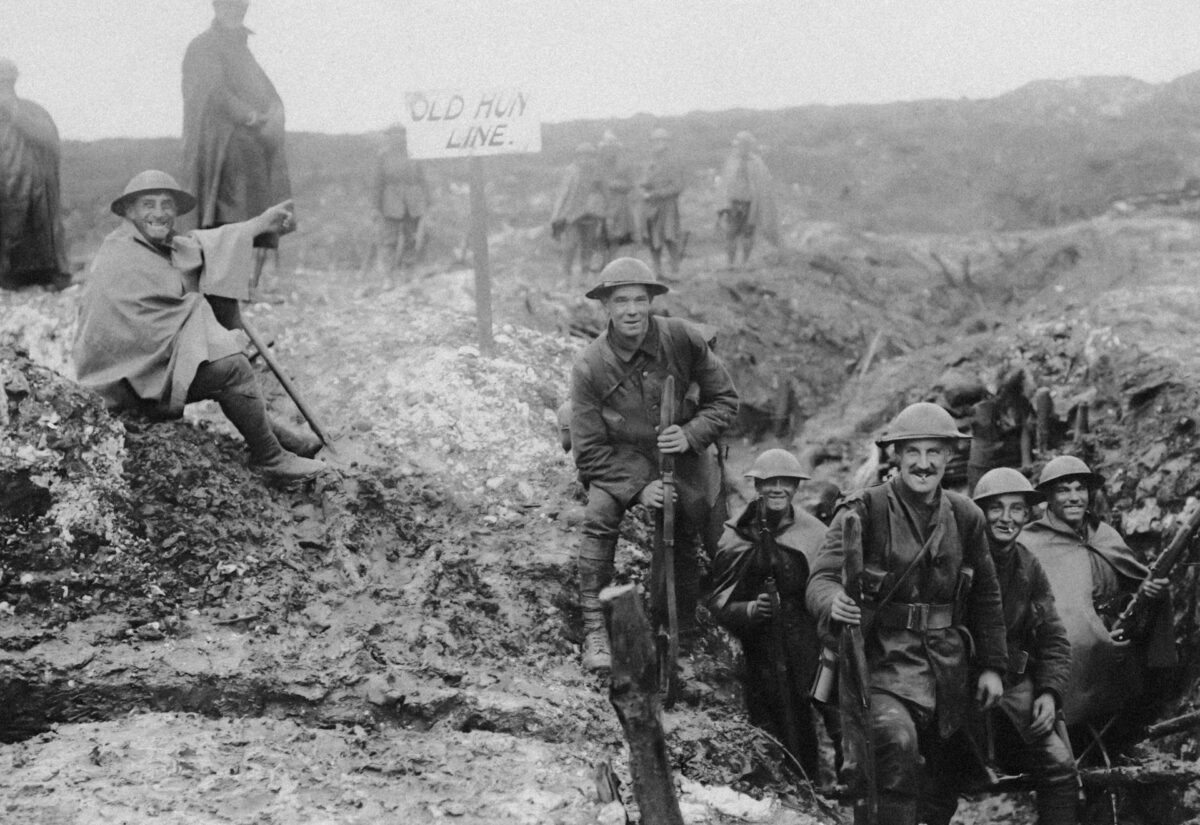 Unsplash/National Library of Scotland
Unsplash/National Library of ScotlandBritish military history is full of well-known victories and clever manoeuvres, but buried among the standard drills and traditional strategies are some downright bizarre tactics that, against all odds, actually worked. From using fake tanks to trick the enemy, to deploying music and mirrors as weapons of confusion, Britain has tried its fair share of strange ideas in the name of survival and success.
Here’s a look at some of the most unusual military ploys that somehow managed to pay off.
Inflatable tanks and wooden planes fooled the Nazis
During World War II, deception became an art form. One of the strangest yet most effective tactics was the use of dummy military equipment—life-sized inflatable tanks, wooden aircraft, and even fake soldiers made of straw—to create the illusion of massive forces where there were none. This was all part of Operation Fortitude, a vast deception campaign meant to convince the Germans that the D-Day invasion would take place in Pas-de-Calais rather than Normandy.
The operation was so convincing that Adolf Hitler kept his elite Panzer divisions stationed in the wrong place for weeks, giving the Allies time to secure a foothold in France. The use of inflatable decoys was not only surreal, it was strategically game-changing. The Imperial War Museums (IWM) has documented many of the props used in this deception.
Bagpipes as a weapon of confusion
Sound has long been used to intimidate or confuse enemies, but the British Highland regiments took it to another level. In World War II, Private Bill Millin, a piper for Lord Lovat’s commandos, played his bagpipes while storming the beaches of Normandy. Under heavy fire, Millin marched up and down the beach playing traditional Scottish tunes, unarmed and seemingly unfazed.
The Germans later admitted they didn’t shoot him because they thought he’d gone mad. His fearless piping became legendary, and it served a bizarre but important role: lifting morale and throwing the enemy off guard. You can read more about Millin’s story here.
A cricket match during battle
In the Second Anglo-Afghan War, British troops reportedly set up a cricket match in full view of the enemy before an engagement. The idea? To suggest calm and confidence, so much so that they had time to enjoy a game. It was a psychological bluff, signalling that they were so sure of victory that they could pause for sport.
Surprisingly, the enemy hesitated, buying British troops valuable time. Though it sounds absurd now, the message it sent was loud and clear: we’re not afraid of you. This tale, while more anecdotal than strategic, captured the strange blend of defiance and showmanship in British colonial warfare.
Shiny shields and mirror flashes in the desert
During campaigns in North Africa, British forces used mirrors and reflected light to confuse enemy pilots. This tactic—part distraction, part signal—made it difficult for enemy aircraft to identify targets accurately. Sometimes it even created the illusion of large, moving armies when none were present.
The tactic was especially effective when combined with fake supply depots and dummy camps. Mirage-like reflections in the desert weren’t always tricks of the light—sometimes they were the British playing mind games with the Luftwaffe. According to British Army records, these measures helped protect vulnerable positions in open terrain.
The “Haversack Ruse” fooled Ottoman intelligence
In World War I, British intelligence pulled off an ingenious bit of deception known as the “Haversack Ruse.” During the Sinai and Palestine campaign, British officers deliberately left a haversack (military satchel) containing fake battle plans where they knew Ottoman patrols would find it.
The enemy fell for it, adjusting their positions based on the false information. This allowed British General Allenby to carry out a successful flanking manoeuvre. The plan was so effective that similar ruses were used later in World War II, including the more famous Operation Mincemeat.
Operation Mincemeat: a corpse with fake papers
Perhaps the most famous of all British deception tactics, Operation Mincemeat involved floating a corpse disguised as a Royal Marine officer off the coast of Spain. The body carried fake classified documents suggesting the Allies would invade Greece and Sardinia, not Sicily.
The Germans believed it. Troops were redeployed, defences weakened, and the actual invasion of Sicily went far more smoothly than expected. It’s one of the strangest military schemes ever attempted, and it worked because of how utterly bizarre it was. The National Archives holds extensive files on how this operation was meticulously executed.
Dummy paratroopers dropped behind enemy lines
As part of the D-Day deception efforts, Britain also used dummy paratroopers, nicknamed “Rupert” dolls, dropped into the French countryside. These mannequins were stuffed with straw and carried small explosives to simulate gunfire upon landing.
The Ruperts diverted German forces away from the real landing zones and created mass confusion in the early hours of the invasion. For a few hours, the Germans believed they were under full-scale assault, buying the real troops time to advance. Their use was critical in spreading enemy forces thin.
Operation Bertram and the Battle of El Alamein
Ahead of the pivotal Battle of El Alamein, British forces built a fake supply depot, complete with dummy tanks, fake pipelines, and even fake wheel tracks in the sand. At the same time, they camouflaged real tanks to look like lorries.
This elaborate misdirection convinced Field Marshal Rommel that the main attack would come from the south, when in fact it came from the north. The operation helped ensure a critical Allied victory in North Africa and marked a turning point in the desert war.
Fake radio chatter and phantom armies
British intelligence didn’t just rely on visual trickery. They also created entire “phantom armies” through radio. Using fake call signs, scripted conversations, and recorded troop movements, they created the illusion of divisions that didn’t exist.
These audio deceptions kept enemy codebreakers and scouts guessing, spreading German forces thin across too many fronts. When done right, it meant the British didn’t have to fight as many enemies at once because some of those enemies were chasing ghosts.
Using everyday noise to mask movement
Sometimes, it was the simple things that worked best. In several jungle campaigns, British troops used local wildlife like monkeys or parrots to gauge enemy proximity and then mimicked those natural sounds to mask their own movements.
At other times, they deliberately played loud, familiar sounds including construction and machinery near front lines to hide the sound of troops assembling or moving into position. It didn’t look clever on paper, but it worked in practice, especially in close quarters where noise discipline was vital.
These tactics might not make it into every textbook, but they were part of what made British military strategy so adaptable.
In war, unpredictability can be as powerful as planning, and sometimes, the weirder the strategy, the more successful the result. Whether it was floating corpses or inflatable tanks, what mattered most was the effect: confusion, hesitation, and just enough misdirection to tilt the odds in Britain’s favour.



